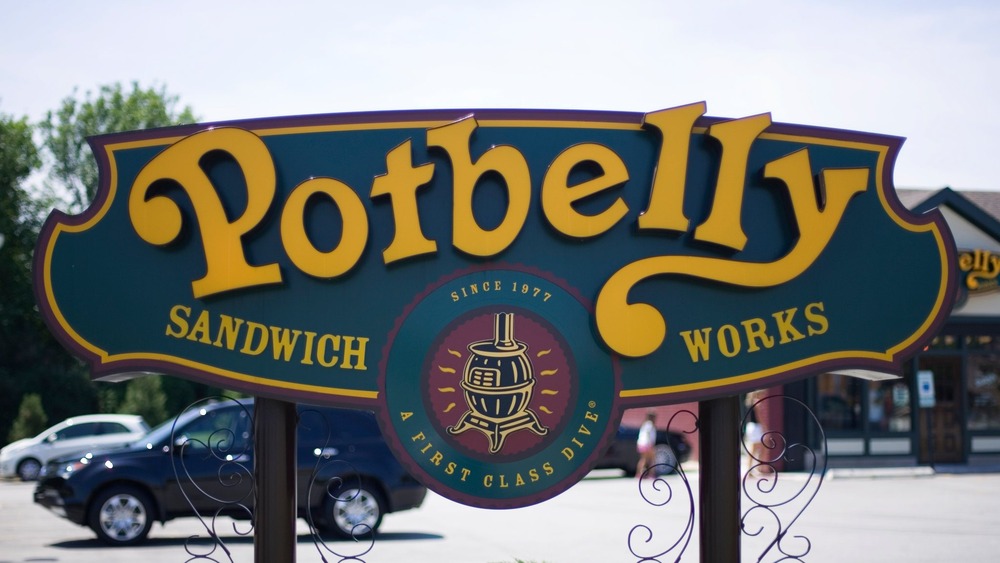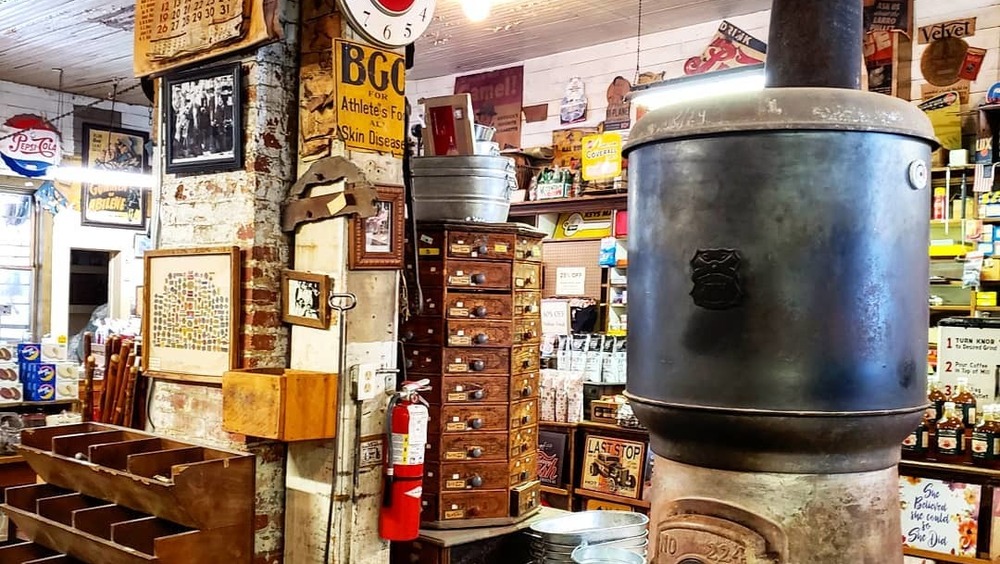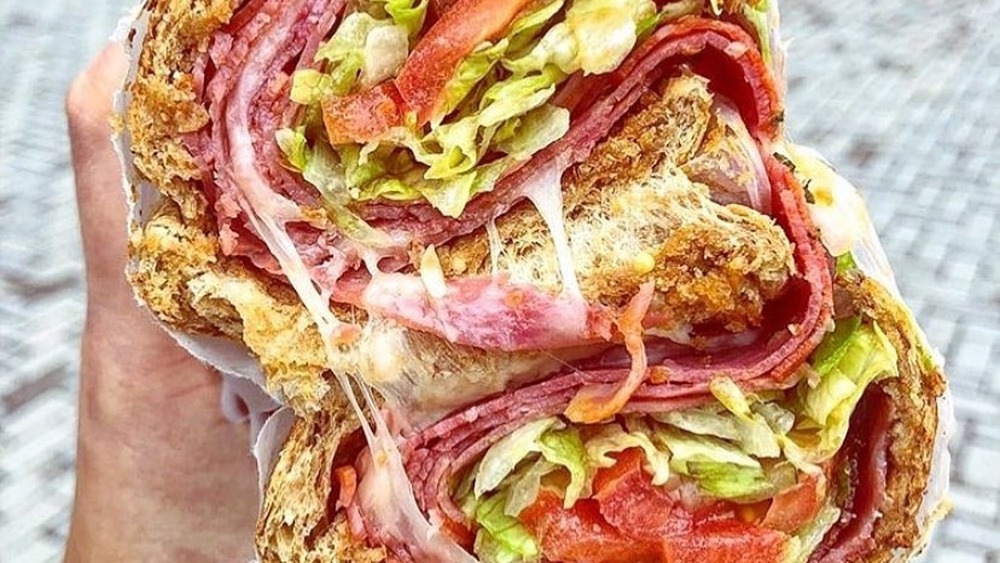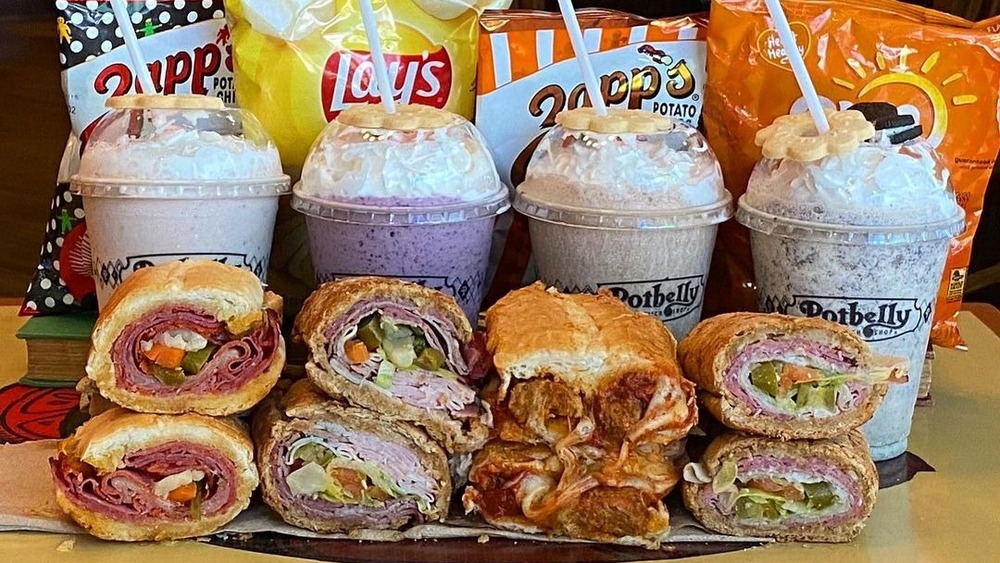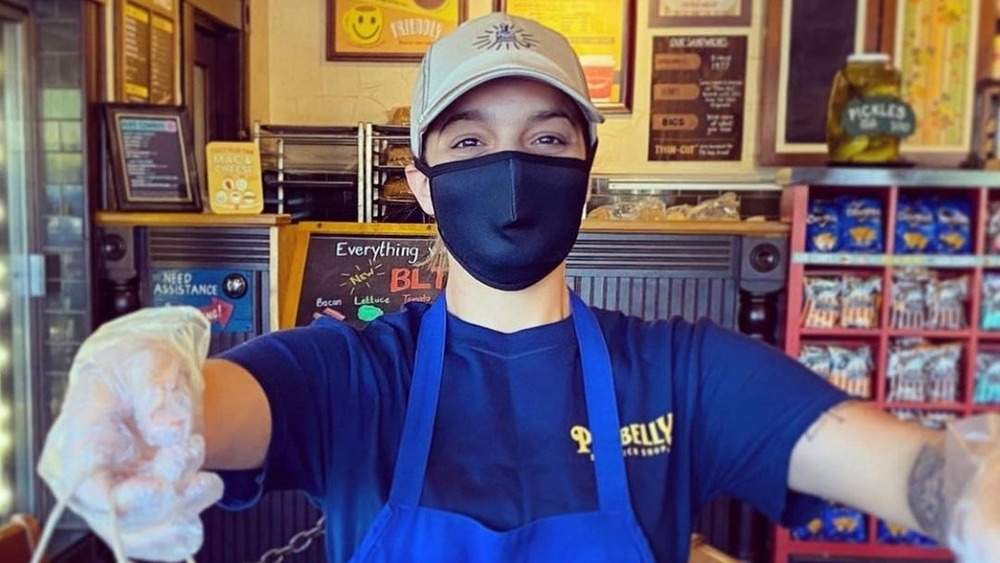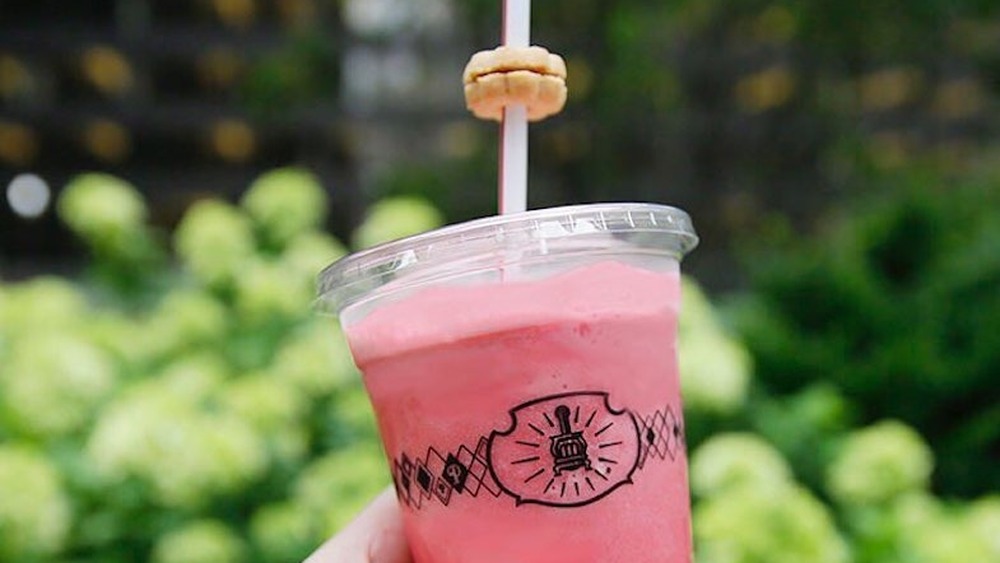The Untold Truth Of Potbelly
Wherever your fast-food sandwich loyalties lie — Subway, Jimmy John's, Which Wich, or Jersey Mike's — you can't deny that there's something different about Potbelly. From the mini cookies on the milkshake straws to the neighborhood-specific décor, these details in each of the chain's 474 locations have helped Potbelly grow from a 1970s standalone sandwich shop to the comfort food hotspot it is today (via U.S. Securities and Exchange Commission).
The story began in 1971 in Chicago's Lincoln Park neighborhood, where local Peter Hastings sold sandwiches in a friendly setting with live music and vintage home goods for purchase (via Potbelly). Not much changed over the next few years besides the increasing popularity of the toasted sandwiches, which Hastings originally intended to sell to his customers while they browsed the shop. In fact, it wasn't until 1996 when Chicago entrepreneur Bryant Keil bought Potbelly that it started growing into what it is today (via Chicago Tribune).
Potbelly was originally an antique store
Peter Hastings opened his first Chicago store as an antique shop, and vintage goods remained the focus of the business for the following six years (via Encyclopedia.com). One such antique was an old potbelly stove, which inspired Hastings to make cheap subs on Italian bread, toast them on the stove, and sell them to customers while they shopped for treasures. The sandwiches were such a hit among locals that Hastings renamed the store Potbelly in 1977, keeping the antique pieces for a cozy atmosphere but refocusing his business to warm sandwiches served with a side of homemade desserts and live music, according to Encyclopedia.com.
As the business grew, it kept the old potbelly stove as its symbol. The chain calls itself "the world's largest collector of antique stoves" because you'll find one in every location. Historically, these stoves have been "warm little outposts where local people could share a meal and some conversation," which is what Potbelly aims to provide to its customers, the company website explains.
Potbelly's toasting technique may be behind its success
We're not saying that Potbelly's Peter Hastings was the first person to toast a sandwich. But the warm, slightly crisped bread has been the chain's signature since the very beginning, while Subway didn't start investing in speedy ovens or offering customers the right to toast until 2005, according to the Pittsburgh Post-Gazette. In fact, the Potbelly toastiness (in part) convinced Keil to buy the business in 1996: the first time he ate a Potbelly sub, he had it cold, Encyclopedia.com reports, so "when he went a second time and ate the toasted version — he was hooked."
Does toasting a sandwich really improve its taste? Many subs are perfectly sublime unheated, but almost any food becomes extra special when hit with the Maillard reaction (via Serious Eats). This chemical process occurs when heat transforms the proteins and sugars in a piece of food into caramelized goodness, and it's the reason why many of us find toast much more delicious than a piece of bread, Cosmopolitan writes. Evidently, it's also the reason that toasters have maintained their spot on the Potbelly assembly line.
Potbelly also has an Underground Menu
If you're versed in the realm of fast-food secret menus, you likely already know about Potbelly's Underground Menu. According to Spoon University, the secret Lucky 7 sandwich is "every meat lover's dream," a combination of Potbelly's Wreck and Italian subs with ham, turkey, roast beef, salami, capicola, and mortadella plus the fixings. Perhaps even meatier is the Barnyard, which packs both bacon and meatballs into one sandwich. Then there's the melty cheddar Cheeseburger sub, writes QSR Magazine. Chili pepper fans can clandestinely order the Fireball, while those with a sweet tooth could use the bacon, peanut butter, and banana Monkey Business, the same article reports.
The "Underground Menu" doesn't only include sandwiches — if you go to Potbelly for the oatmeal chocolate chip cookies or chocolate shakes, you'll be pleased to know that the menu features plenty of sugar too. QSR Magazine reports that two such items are the Cookie Collision Shake, blended with both Oreos and shortbread cookies, and the Dream Bar Sundae, which combines ice cream with Potbelly's gooey chocolate-caramel-oatmeal bars.
Each Potbelly is different
Peter Hastings invited local musicians to entertain customers at the original Potbelly, and the tradition is still alive to this day. Despite its growth, the chain has stood out among competitors by maintaining a quirky and welcoming neighborhood feel — in large part due to the jazz, rock, folk, and other types of music you can hear from local artists at each Potbelly store, according to The Motley Fool.
Just as no two Potbelly locations sound the same, no two look exactly the same, either. There's a whole Potbelly team tasked with searching each location's local art and artifact scene and then using their finds to decorate each store, Mental Floss reports. Potbelly isn't the only brand that employs this technique to create a mom-and-pop atmosphere though — you may have noticed the same thing at your closest Trader Joe's (via Advocate Magazine). Next time you're waiting for your Potbelly sandwich (for no more than eight minutes, as the company promises), look beyond the vintage stove and see what neighborhood relics you might find.
Potbelly is a sucker for details
Maybe the first thing that charmed you about Potbelly was the flower-shaped shortbread cookie placed on every milkshake straw. (Did you know you can buy those? They're available in 14-ounce bags on the Potbelly Pantry web page.) Or perhaps it was the selection of Zapp's potato chips or the decorative jars of oversize condiments behind the counter. Whatever the reason, Potbelly has an undeniable eye for detail, and there's one particular tidbit that you may not have caught.
Each Potbelly store hides secret handwritten messages, and they're not so elaborate: A simple "P" for pigs and "H" for hogs stand for the saying, "Pigs get fat, and hogs get slaughtered," Keil explained to the Chicago Tribune. The adage serves as a reminder for employees not "to cheat a customer" by skimping on serving sizes or serving a day-old cookie, Keil said. While the expression may sound strange, it's commonly used in business to say that while swindling customers may make money in the beginning, it's a loss in the end (via Ask the Manager).
